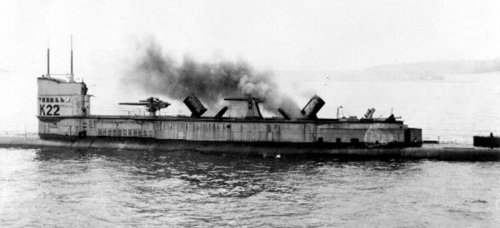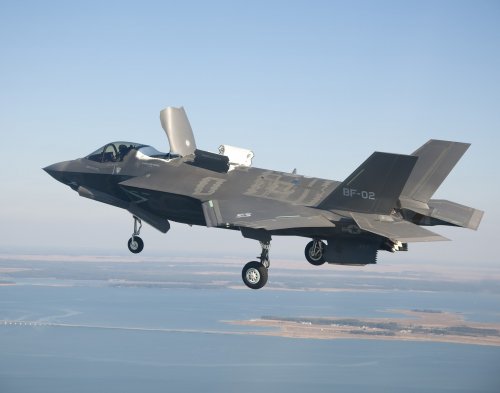Looks like IOC of the F-35B will be delayed for another year to July 2016. Does the 18-month delay in the release of the Block 2B software also affect the release date of Block 3I and Block 3F software and the IOC dates of the F-35A and F-35C?
"Exclusive: Pentagon report faults F-35 on software, reliability"
by Andrea Shalal-Esa
WASHINGTON Thu Jan 23, 2014 3:36pm EST
Source:
http://www.reuters.com/article/2014/01/23/us-usa-lockheed-fighter-idUSBREA0M1L920140123
"Exclusive: Pentagon report faults F-35 on software, reliability"
by Andrea Shalal-Esa
WASHINGTON Thu Jan 23, 2014 3:36pm EST
Source:
http://www.reuters.com/article/2014/01/23/us-usa-lockheed-fighter-idUSBREA0M1L920140123
(Reuters) - A new U.S. Defense Department report warns that ongoing software, maintenance and reliability problems with Lockheed Martin Corp's F-35 stealth fighter could delay the Marine Corps' plans to start using its F-35 jets by mid-2015.
The latest report by the Pentagon's chief weapons tester, Michael Gilmore, provides a detailed critique of the F-35's technical challenges, and focuses heavily on what it calls the "unacceptable" performance of the plane's software, according to a 25-page draft obtained by Reuters.
The report forecast a possible 13-month delay in completing testing of the Block 2B software needed for the Marine Corps to clear the jets for initial combat use next year, a priority given the high cost of maintaining current aging warplanes.
Gilmore, director of operational test and evaluation for the U.S. Defense Department, has long been critical of the $392 billion F-35 Joint Strike Fighter, the Pentagon's costliest weapons program, and the latest report is no exception.
The report, due to be sent to Congress this week, said the aircraft is proving less reliable and harder to maintain than expected, and remains vulnerable to propellant fires sparked by missile strikes.
Air Force Lieutenant General Chris Bogdan, the Pentagon's F-35 program chief, said in a statement to Reuters that Gilmore's report was factually accurate but did not reflect concerted efforts under way by his office and industry to address software, reliability and maintenance issues.
"The basic design of the F-35 is sound, and test results underscore our confidence in the ultimate performance that the United States and its international partners and allies value so highly," Bogdan said. "Of course, we recognize risks still exist in the program, but they are understood and manageable."
Bogdan said he remained confident that the F-35's initial combat capability would be ready in time for the U.S. Marine Corps next year, and cited a series of successful weapons tests done late last year. He said the program was about halfway through developmental testing after completing 1,153 flights and accomplishing more than 9,000 test objectives in 2013.
Lockheed is developing the F-35 for the Marines, Air Force and Navy, and eight countries that helped fund its development: Britain, Canada, Australia, Norway, Italy, Turkey, Denmark and the Netherlands. Israel and Japan have also ordered the jet.
The program, which began in 2001, is 70 percent over initial cost estimates, and years behind schedule, but top U.S. officials say it is now making progress. They have vowed to safeguard funding for the program to keep it on track.
OTHER CRITIQUES
Earlier this week, the nonprofit Center for International Policy said Lockheed had greatly exaggerated its estimate that the F-35 program sustained 125,000 U.S. jobs to shore up support for the program.
Both reports could provide fresh fodder for critics of the F-35 program, including backers of Boeing Co, which is hoping to sell the U.S. Navy more of its F/A-18 fighter jets.
But Lockheed Chief Executive Marillyn Hewson told reporters on Thursday that she saw continued support for the F-35 from the U.S. government, Congress and foreign allies.
"There's no question ... that we need the F-35. It brings a very important, unique capability for our nation," she said.
Lockheed spokesman Michael Rein said Gilmore's report confirmed the F-35 was meeting or exceeding flight test goals, and the company would continue to tackle issues as they arose.
"The challenges identified are known items and the normal discoveries found in a test program of this size and complexity," he said.
Gilmore's report acknowledged the F-35's progress in 2013 on flight testing, despite government furloughs and two fleet-wide groundings. But it said the program was still struggling to integrate the plane's "mission systems," or sensors, weapons and other equipment needed for use in military operations.
The current software generated too many nuisance warnings and resulted in poor sensor performance. Further work on software had been slowed by testing required to validate earlier fixes, the report said.
It said Lockheed had delivered F-35 jets with 50 percent or less of the software capabilities required by its production contracts with the Pentagon.
The computer-based logistics system known as ALIS was fielded with "serious deficiencies" and remained behind schedule, which affected servicing of existing jets needed for flight testing, the report said. It said the ALIS diagnostic system failed to meet even basic requirements.
But the most immediate concern involved the Block 2B version of the software that must be completed in order for the Marines to start using the jets from July 2015.
"Initial results with the new increment of Block 2B software indicate deficiencies still exist in fusion, radar, electronic warfare, navigation, electro-optical target system, distributed aperture system, helmet-mounted display system, and datalink," the report said, noting the problems could delay efforts to complete Block 2B development and flight test.
The report cited projections that the 2B software would not be completed until November 2015, 13 months later than planned. This would delay release to the F-35 fleet until July 2016, a year after the Marines want to start using the jets.
It said there is also little margin for any weight growth, and the airplane's increased use of electrical systems makes it vulnerable to lightning and missile strikes.
Bogdan said extensive studies had showed the plane's radar-evading capabilities, advanced sensors, ability to fuse data, advanced countermeasures and electronic attack equipment greatly reduced the chance that it would be hit by enemy fire.




